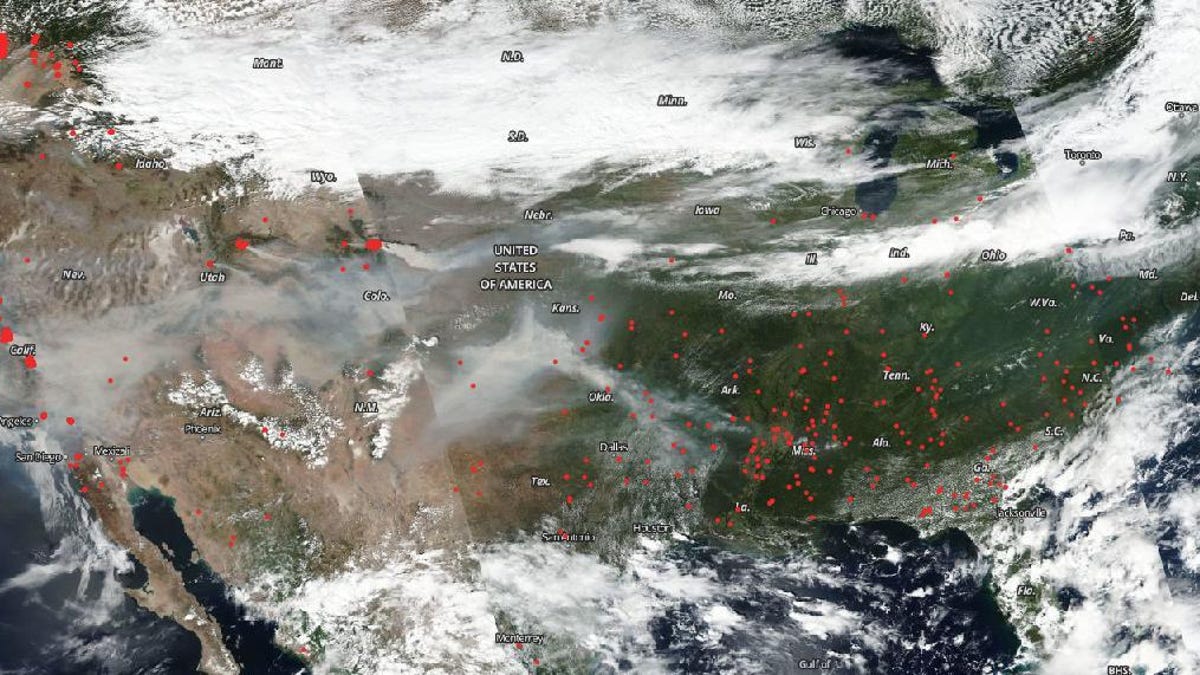NASA view shows hazy horror of wildfire smoke stretching across US
Even the East Coast hasn't been spared from the haze.
Here in New Mexico, I can usually stand in my front yard and see the Sandia Mountains to the east. On Tuesday, they're obscured by haze. Huge stretches of the US are filled with smoke primarily from western wildfires. A NASA satellite view shows just how severe it is.
The Suomi NPP satellite is run by NASA and the National Oceanic and Atmospheric Administration. A true-color view of the US from Monday shows the effects of many active wildfires as pinpointed in red in the image.
"Obscuring the surface is a blanket of smoke from California to Arkansas with a haze present over the East Coast as well," said NASA in a release on Tuesday.
California is a major source of smoke due to fires across the state, including one that was sparked by a pyrotechnic at a gender-reveal party. Other western states haven't escaped the devastation as wildfires burn across the Pacific Northwest and in Arizona, Utah, Colorado and New Mexico.
This Suomi NPP satellite data shows the spread of aerosols from wildfires in the US on Sept. 7.
Suomi NPP also delivered an image of aerosols released by the fire. "This image shows a significant area of deep red range which means aerosols in the area could potentially be dangerous to the health of those in that area," said NASA.
Aerosols related to wildfires can travel far on high-altitude winds. The EPA calls out a variety of potential health problems (PDF) related to aerosols, including respiratory and cardiovascular issues.
A huge portion of the mainland US is seeing some impact from 2020's rampant fires, and it isn't over yet. The National Weather Service warned of "another day of critical to extreme fire weather conditions" on Tuesday that could lead to "very dangerous fire behavior and spread."


